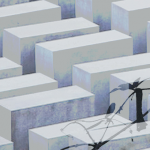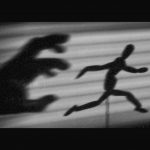Entomologia forense: origini ed evoluzione
Bibliografia
Bergeret M. (1855), Infanticide Momification naturelle du cadavre. Decouverte du cadavre d’un enfant nouveau-ne dans une cheminee ou il satait momigie. Determination da l’epoque de la naissance par la presence de nymphes et de larves d’insectes dand le cadavre et par l’etude des leurs metamorphoses in «Ann. Hyg. Med. Leg.», 4: 442-52.
Bornemissza G.F. (1957), An analysis of arthropod succession in carrion and the effect of its decomposition on the soil fauna, in «Aust. J. Zool.», 5: 1-12.
Catts E.P., Goff M.L. (1992), Forensic entomology in criminal investigations. «Ann. Rev. Entomol.», 37: 252-72.
Catts E.P., Haskell N.H. (1990) Entomology & Death: a procedural guide, editore Joyce’s Print Shop, Inc., Clemson, South Carolina.
Davies L., Ratcliffe G.G. (1994), Development rates of some pre adult stages in blowflies with reference to low temperatures, in «Med. Vet. Entomol.», 8: 245-54.
Erzinçlioglu Y.Z. (1983), The application of Entomology to forensic Medicine in «Med. Sci. Law», 23 (1): 57-63.
Erzinçlioglu Y.Z. (1986), Areas of research in forensic entomology in «Med. Sci. Law», 26 (4): 273-7.
Erzinçlioglu Y.Z. (1989), Entomology, zoology, and forensic science: the need for expansion in «Forensic Sci. Inter.», 43: 209-13.
Erzinçlioglu Y.Z. (1989), Entomology and the forensic scientist: how insects can solve crimes in «J. Biol. Education», 23 (4): 300-2.
Fuller M.E. (1934), The insect inhabitans of carrion, a study in animal ecology in «Bulletin Australia, Commonwealth, Council for scientific and industrial Research» , 82: 1-62.
Goff M.L., Brown W.A., Hewadikaram K.A., Omori A.I. (1991), Effects of heroin in decomposing tissue on the development rate of Boettcherisca peregrina (Diptera: Sarcophagidae) and implications of this effect on estimation of postmortem intervals using arthropod development patterns in «J. Forensic Sci.», 36: 537-42.
Goff M.L., Brown W.A., Omori A.I. (1992), Preliminary observations on the effects of methamphetamine in decomposing tissues of Parasarcophaga ruficornis (Diptera: Sarcophagidae), and implications of this effect on the estimations of postmortem intervals in «J. Forensic Sci.», 37 (3): 867-72.
Goff M.L., Lord W.D. (1994), Entomotoxicology: a new area of forensic investigation in «Am. J. Forensic Med. Pathol. », 15 (1): 51-7.
Goff M.L., Lord W.D. (1998), Entomotoxicology, Bari seminario di entomologia forense 12-14 novembre 1998.
Goff M.L., Miller M.L., Paulson J.D., Lord W.D., Richards E., Omori A.I. (1997), Effects of 3,4 methylene-dioximethamphetamine in decomposin tissues of Parasarcophaga ruficornis (Diptera: Sarcophagidae) and detenction of the drung in postmortem blood, liver tissue, larvae and puparia in «J. Forensic Sci.», 42: 276-80.
Goff M.L., Omori A.I., Goodbrond J.R. (1989), Effect of cocaine in tissue on the rate of development of Boettcherisca peregrina (Diptera: Sarcophagidae) in «J. Med. Entomol.», 26: 91-93.
Greenberg B. (1991), Flies as forensic indicators in «J. Med. Entomol.», 28 (5): 565-77.
Greenberg B., Kunich J.C., (2002), Entomology and the law: flies as forensic indicators, editore Cambrige
Introna F. Jr. (1998), The role of sarcosaprophagous insects in human decay rates and essentials on the determination of the time since death by entomological techniques, Bari seminario di entomologia forense 12-14 novembre 1998.
Introna F. Jr., Altamura B.M., Dell’Erba A., Dattoli V. (1989), Time since death definition by experimental reproduction of Lucilia sericata cycles in growth cabinet in «J. Forensic Sci.», 34 (2): 478-80.
Introna F. Jr., Campobasso C.P. (1998), Entomologia forense, editore Essebiemme, Noceto (PR), 191 pp.
Introna F. Jr., Gagliano-Candela R., Di Vella G. (1996), Opiate analysis on empy puparia – Positive results, in proceedings of XX International Congress of Entomopogy, august 25-31, Firenze (Italy)
Introna F. Jr., Lo Dico C., Caplan Y.H., Smialek J.R. (1990), Opiate analysis in cadaveric blowfly larvae a san indicator of narcotic intoxication in «J. Forensic Sci.», 35: 118-22.
Keh B. (1985), Scope and applications of forensic entomolgy in «Ann. Rev. Entomol.», 30: 137-54.
Kintz P., Tracqui A., Ludes B., Waller J., Boukhabza A., Mangin P., Lugnier A.A., Chaumont A. J. (1990), Fly larvae and their relevance in forensic toxicology in «Am. J. Forensic Med. Pathol.», 11 (1): 63-5.
Kintz P., Godelar B., Tracqui A., Mangin P., Lugnier A.A., Chaumont A. J. (1990), Fly larvae: a new toxicological method of investigation in forensic entomology in «J. Forensic Sci.», 35 (1): 204-7.
Leclerq M., Verstareten C. (1993), Entomologie et medicine legale. L’entomofaune des cadavres humanines in «J. Med. Leg. Droit», 3 (4): 205-22.
Lord W.D., Dizinno J.A., Wilson M.R., Budowle B., Taplin D., Meinking T.L. (1998), Isolation, amplification and sequencing of human mitochondrial DNA obtained from human crab louse, Pthirus pubis (L.), blood meals in «J. Forensic Sci.», 43(5): 1097-1100.
Lord W.D., Stevenson J.R. (1998), Directory of Forensic Entomologists, 2nd ed. Def Pest Mgmt Info Anal Center , Walter Reed Army MedicalCenter, Whasington, D.C., 42 pp.
Mégnin J.P. (1894), La faune de cadavres. Application de l’entomologie à la médicine légale, Enciclopedie Scientifique des Aides Memories, editore Masson, Paris.
Nuorteva P. (1977), Sarcosaprophagous insects as forensic indicators In Tedeschi C.G., Eckert W.G. e Tedeschi L.G., Forensic Medicine: a study of trauma and developmental hazard, Vol. 2, W.B., Saunders Co., Philadelphia, 1072-1095.
Payne J.A. (1965), A summer carrion study of the baby pig Sus scrofa Linnaeus in «Ecology», 46 (5): 592-602.
Porta C.F. (1929), Contributo allo studio dei fenomeni cadaverici: l’azione della microfauna cadaverica terrestre nella decomposizione del cadavere, in «Arch. Antrop. Crimin. Psichiatr. Med. Leg.», 3-55.
Redi F. (1668), Esperienze intorno alla generazione degli insetti in Introna F. Jr., Campobasso C.P. (1998), Entomologia forense, editore Essebiemme, Noceto (PR), 191 pp.
Reed H.B. (1958), A study of dog carcass communities in Tennessee, with special reference to the insects in «Midland Naturalist», 59: 313-245.
Sadler D.W., Robertson L., Brown G., Fuke C., Pounder D.J. (1997), Barbiturates and analgesics in Calliphora vicina larvae in «Forensic Sci.», 42 (3): 481-5.
Schoenly K. (1992), A statistical analysis of successional patterns in carrion arthropod assemblages: implications for forensic entomology and detrminatuion of the post mortem interval in «Forensic Sci.», 37 (6): 1489-1513.
Schoenly K., Goff M.L., Early M. (1992), A BASIC algorithm for calculating the postmortem interval from arthropod successional data in «J. Forensic Sci.», 37 (3): 808-23.
Schoenly K., Goff M.L., Wells J.D., Lord W.D. (1996), Quantifying statistical uncertainty in succession based entomological estimates of the postmortem interval in death scene investigations: a simulation study in «Am. Entomol.», 106-12.
Smith K.V.G. (1986), A manual of forensic entomology, British Museum (Natural History), London.
Turner B.D. (1987), Forensic entomology: insects against crime in «Sci. Prog. Oxf.», 71: 133-44.
Turner B.D. (1991), Forensic entomology in «Forensic Sci. Prog.», 5: 129-51.
Wells J.D., LaMotte L.R., (1995), Estimating maggot age from weigt using inverse prediction in «J. Forensic Sci.», 40: 585-90.
Von Zuben C.J., Bassenezi R.C., dos Reis S.F., Godoy W.A.C., Von Zuben F.J. (1996), Theoretical approaches to forensic entomology: I mathematical model of postfeeding larval dispersal in «J. Appl. Ent.», 120: 379-82.




